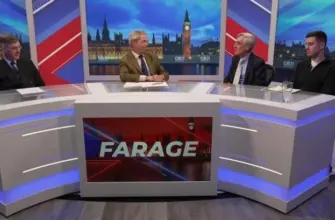## Federal Election Showdown: Labor and Coalition Unveil Competing Tax Plans
With less than three weeks remaining until the federal election, both major parties – Labor and the Coalition – have presented significant tax policies aimed at securing voter support. Prime Minister Anthony Albanese has proposed an instant tax deduction for workers, while Opposition Leader Peter Dutton is offering a one-year tax offset designed to alleviate cost of living pressures.
Let’s examine these proposals: how they function, who stands to gain, and the associated financial implications.
### Labor’s Instant Tax Deduction
If re-elected, Labor intends to implement an “instant tax deduction” scheme beginning in the 2026-27 financial year. This system would replace the current practice of meticulously saving receipts and submitting individual work-related expense deductions.
- Taxpayers could instead claim a blanket $1000 deduction from their taxable income.
- Individuals with legitimate deductions exceeding $1000 would still be able to pursue those claims as they have in the past.
This policy draws inspiration from the 2010 Henry Review, a comprehensive report advocating for tax system reform that was largely overlooked at the time.
Approximately 5.7 million Australians – nearly 40% of taxpayers – are expected to benefit from this simplification. To qualify, individuals must earn labour income (as opposed to business or investment income).
The average tax saving is estimated at $205, with the greatest benefits directed towards low- and middle-income earners. Those earning between $45,001 and $135,000 could see their annual tax bill reduced by up to $320.
Beyond the direct financial impact, Labor highlights the potential time savings: “The time saving alone from reducing the burden of record keeping on millions of taxpayers is estimated to be worth about $200 million a year.”
This policy would begin in the 2026-27 financial year if Labor prevails and, as a permanent measure, has no planned end date.
The projected cost to the budget over four years is $2.4 billion.
### Coalition’s Cost of Living Tax Offset
In contrast, the Coalition’s proposal centers around a “cost of living tax offset,” promising up to $1200 for low- and middle-income earners in the next financial year (2025-26) if they are elected.
“This is essentially a slightly less generous repeat of the Morrison government’s low and middle income tax offset (LMITO, or sometimes referred to as the “lamington”) that was expanded ahead of the 2022 federal election,”
- The offset will reduce the tax bill for anyone earning up to $144,000.
- Over 10 million Australians – roughly 85% of all taxpayers – are expected to be eligible.
The amount received depends on income levels:
- Individuals earning up to $37,000 could receive “up to $265”.
- Those earning between $48,001 and $104,000 will get a flat $1200.
- The offset gradually decreases for higher earners until it vanishes for those earning over $144,000.
Taxpayers won’t need to apply; the offset will be automatically incorporated into their tax returns.
If elected, the Coalition plans to implement this offset solely for the 2025-26 financial year, with no extension planned.
The estimated cost to the government is $10 billion for that single year.



